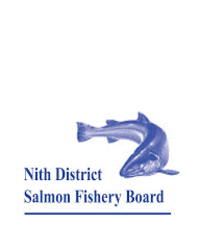


Local Sponsors
-
Friars Carse Hotel
Auldgirth, Dumfries DG2 0SA
Set in a 45 acre estate including woodland extending to the banks of the River Nith, the 3 star country house hotel, with its magnificent panelled entrance hall and elegant staircase, offers guests a warm welcome.
-
Nith District Salmon Fishery Board
37 George Street Dumfries Scotland DG1 1EB
The Board's principle objectives are to preserve, protect and enhance stocks of migratory salmonids in the Nith catchment and to preserve, protect and enhance the fishery.
More information
Many thanks to Friars Carse Hotel for facilitating this camera's location and to the Nith District Salmon Fishery Board for capitally funding its installation. The River Nith, the seventh longest river in Scotland, originates in East Ayrshire within the Carsphairn hills. It traverses Dumfries and Galloway for the majority of its course before eventually emptying into the Solway Firth at Dumfries. The region through which the river flows is known as Nithsdale, historically referred to as 'Stranit' from the Scottish Gaelic term "Strath Nid," meaning 'valley of the Nith.' The River Nith is widely regarded as the most productive among the Solway Rivers, offering exceptional angling opportunities for anglers of various skill levels and experience.
On Friday, 16 October 1789 (1790), at Friars' Carse, Robert Burns was present at a renowned drinking contest where three lairds competed to determine the last person capable of blowing an inherited ebony whistle that belonged to Robert Riddell. This event was a repetition of previous contests, with the prize being the old ebony Whistle. The incident was immortalized in the poem "The Whistle."The winner of the contest managed to consume over eight bottles of claret (some sources suggest five or six). Alexander Fergusson of Craigdarroch emerged victorious, standing and successfully blowing the whistle. Sir Robert Laurie of Maxwellton collapsed on the floor, and Robert Riddell retired to his bed. The Duke of Buccleuch's chamberlain, McMurdo of Drumlanrig, acted as the judge, with two other neighbors serving as witnesses.According to certain accounts, the ebony whistle had been brought from Denmark by a courtier in the service of Prince George of Denmark, the husband of Queen Anne. However, there is some confusion as the initial drinking contest had been won by a previous Sir Robert Laurie, who was the original owner of the whistle. He was a courtier in the retinue of Anne of Denmark, the wife of King James IV of Scotland. In a subsequent contest, his son Walter lost the whistle to Walter Riddell, an ancestor of Robert Riddell.Groome's records suggest that the ebony whistle became the centerpiece of drinking contests due to the habits of the original Danish owner, described as a man of "gigantic stature" who would challenge anyone to blow the whistle, with the last person capable of doing so being declared the winner. Sir Robert Laurie took on this formidable Scandinavian opponent and emerged victorious after an arduous contest lasting "three days and three nights," leaving the courtier beneath the table and claiming the prize.Allan Cunningham recounts that Robert Burns himself, who consumed numerous bottles, appeared inclined to challenge the conqueror as dawn approached. However, the veracity of this account is heavily disputed by more reliable biographers.Following the contest, Burns borrowed the ebony whistle with permission and showed it to friends in Mauchline. He also organized a second drinking contest at Sanquhar's New Inn, involving himself, Edward Whigham, John Rigg, John King, and William Johnston. The participants enjoyed whisky toddy served in a punch-bowl. The victor on this occasion was reportedly William Johnstone, while the judge was John, son of Edward Whigham. Joseph Train also records this story and mentions that the whistle had been partly restored since it was won from Anne of Denmark's courtier. Additionally, it was often accompanied by a large, finely crafted Scandinavian drinking horn, which Burns had also borrowed.


